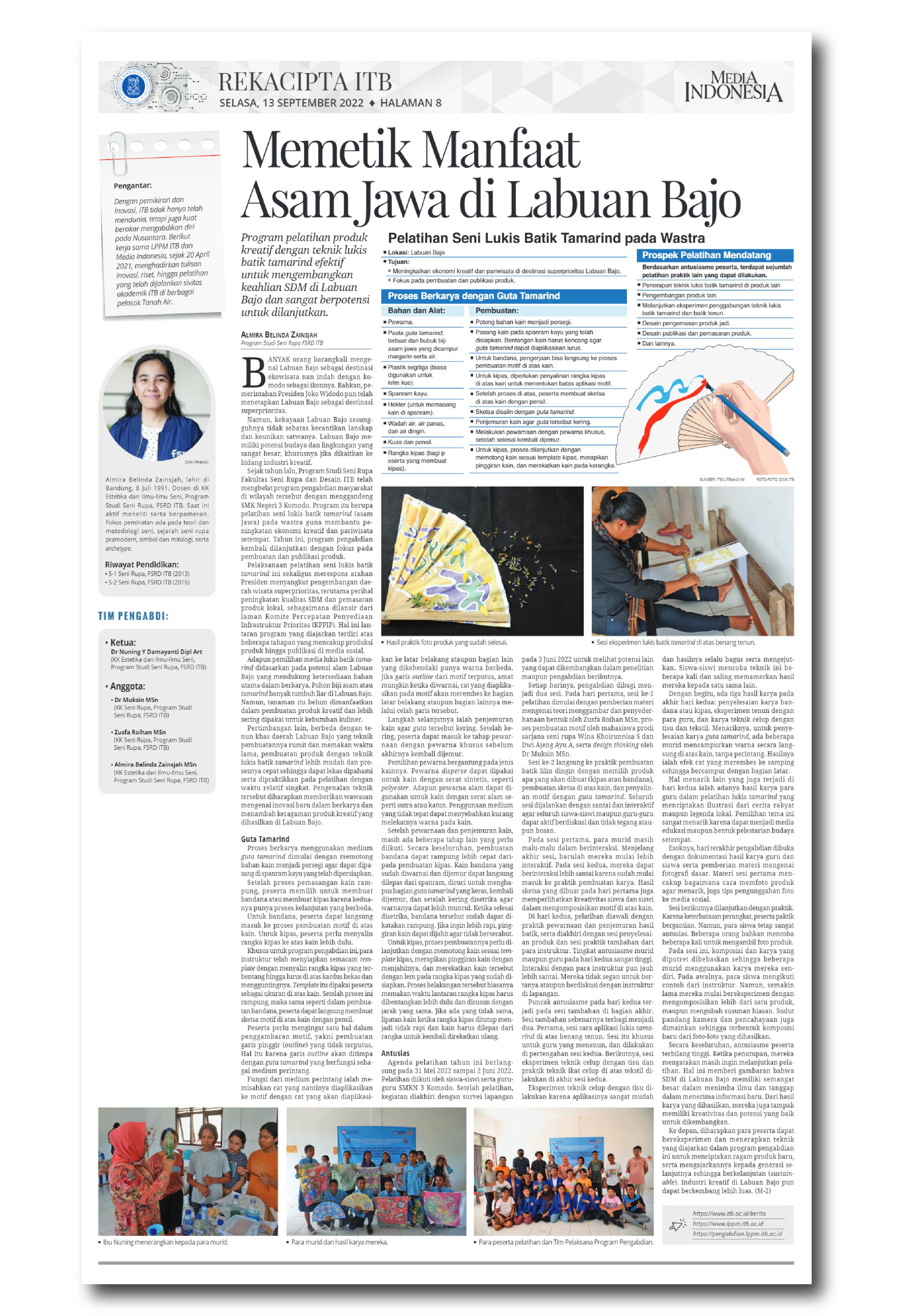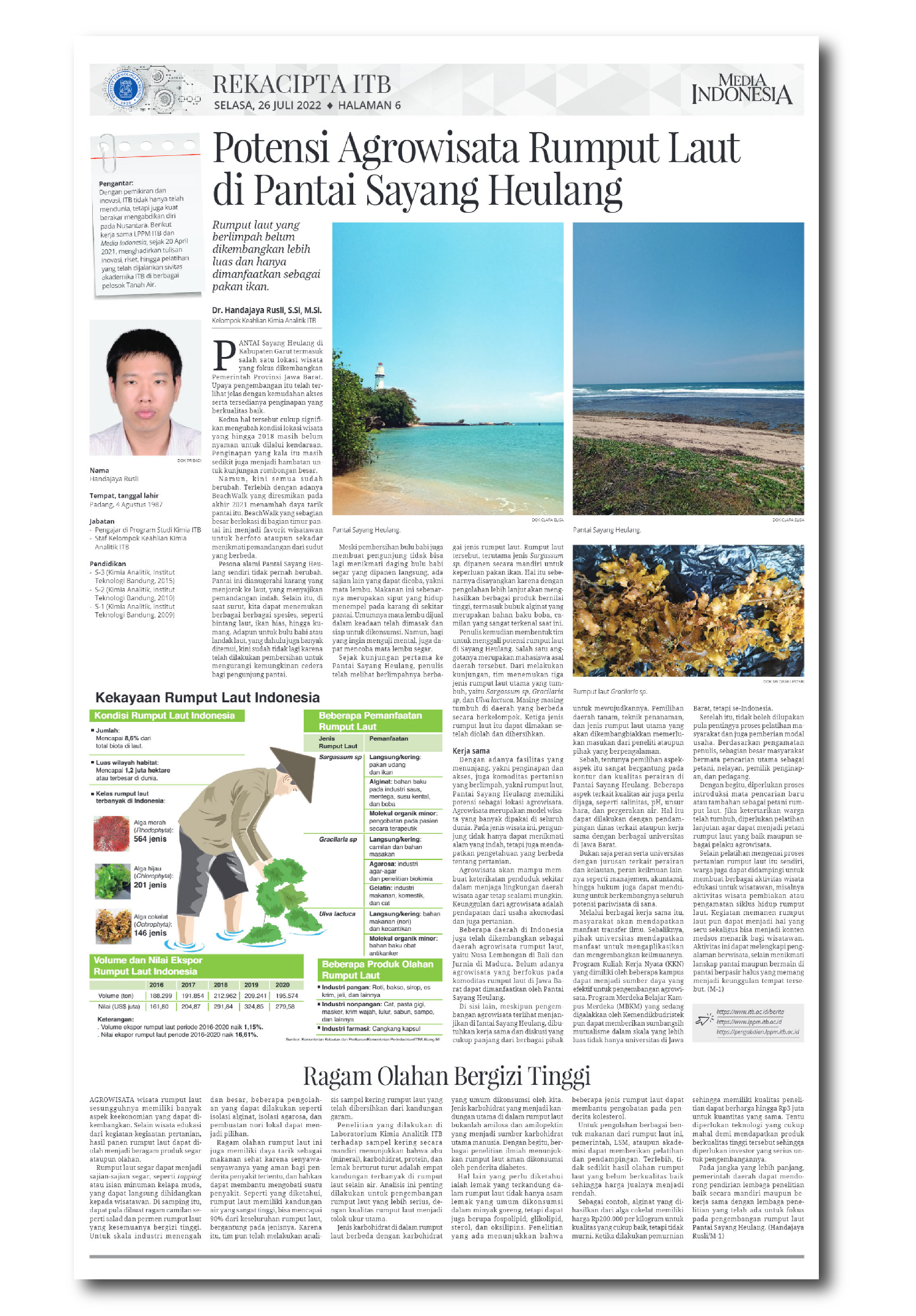Depicting the Beauty of Labuan Bajo with Tamarind Batik
By Adi Permana
Editor Adi Permana

BANDUNG, itb.ac.id—Aside from its tourist landscape, Labuan Bajo possesses extraordinary cultural and environmental potential. Hence, the Visual Arts Study Program of ITB FAD conducted their community service last year at SMK Negeri 3 Komodo, Labuan Bajo. It is hoped that this program can improve Labuan Bajo's tourism and creative economy through tamarind batik.
Almira Belinda Zainsjah, M.Sn., a member of the community service team from the Aesthetics and Arts Research Group, said that the topic was chosen based on the abundance of the biji asam trees in Labuan Bajo. "Creating the products with the painting techniques of tamarind batik can be quickly understood and practiced in a relatively short time."
This year, the team plans to resume this community service, focusing on the manufacture and publication of the products. To create the tamarind batik, a square fabric material attached to a wooden frame is prepared. Participants can choose to create either a bandana or a fan; the difference is that those who choose bandanas can immediately make the motifs while fans require the frame pattern to be copied onto the fabric first.
The assigned instructors guided the participants to outline the pattern, which will be covered by the guta tamarind. The guta tamarind acts as a barrier between the paint and the background. If it is broken, the paint will seep into other parts of the pattern during the painting process.
The next step is to dry the fabric before entering the coloring stage. The media of the colors depend on the type of fabric used. "Wrong use of the medium can cause the colors to not stick to the fabric properly," Almira added.
The bandana fabrics that have been dyed and dried in the sun can be directly removed from the frame and washed to remove the guta tamarind. They are then redried and ironed. For a neater result, the sides of the fabric can be sewn to get rid of the fibers. Meanwhile, the manufacturing process of fans continues by cutting the fabric according to the given pattern. Their edges are then sewn and glued to the frame. This stage can take a long time to finish because the frame must be stretched out and arranged in advance for better results.
According to the team, the training which took place from 31 May to 2 June 2022 was enthusiastically partaken by students and teachers of SMK Negeri 3 Komodo. Participants were invited to two training sessions every day, covering the provision of material and the practice of tamarind batik painting. All activities are carried out in a fun and relaxed manner while keeping their interactivity via discussion forums.
"The students and teachers were especially excited on the last session of the second training day,” Almira recounted. “This session is divided into two. The first was teaching the application of tamarind painting on weaving threads. This is taught to teachers who can weave. The latter experimented on dyeing techniques, including the tie-dyeing method on textiles.”
The results created by the teachers were noted to be fascinating by the team. They decided to illustrate local folk tales and legends that can serve as educational media and preserve local cultures.
On the last day, participants can witness their artworks being documented while having the opportunity to learn basic photography for promoting their products. The compositions of the photos are limitless; students can freely create their photos without restrictions.
The participants’ enthusiasm lasted until the closing session. They admitted that they still want to continue training and gain new knowledge. From their artworks, they seemed to have the potential to develop their skills and teach painting techniques to the next generations for the sustainable creative industry of Labuan Bajo.

*This article has been published in the ITB Engineering rubric of Media Indonesia. The full article can be read at https://pengabdian.lppm.itb.ac.id
Reporter: Sekar Dianwidi Bisowarno (Bioengineering, 2019)
Translator: Ruth Nathania (Environmental Engineering, 2019)

.jpg)

.jpg)
.jpg)
.jpg)

